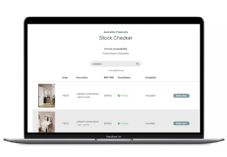UK DIY News
Online Now The Number One Channel For Kitchen Buyers

Physical stores and expert support still have an important role, but sales success hinges on new omnichannel strategies.
The boom in online shopping has undoubtedly changed how kitchen brands and retailers must operate. However, the extent of change might come as a surprise. Our latest research has revealed the majority of consumers (37%) would now prefer to plan their kitchen redesign entirely online – but retailers are lacking the design tools to achieve the personalized, digitally enabled experiences they expect.
At the same time, brick-and-mortar stores still have a role to play. Half of the consumers surveyed (53%) said they value support from a sales professional or designer. A kitchen is a big-ticket purchase for most people, so they need to be confident in their choices. Discussing their options with an expert provides essential reassurance. However, it should be acknowledged as one step within a complex purchase journey.
These new trends highlight an essential need for kitchen retailers to revisit and strengthen their omnichannel and drive-to-store strategies. They must offer a holistic experience that starts – and even ends – where most consumers now expect it to – online.
1. Deliver the web-to-store strategy consumers expect
Our latest study into kitchen retail preferences shows that some consumers prefer to design and buy exclusively online, and some want to shop only in-store, but most demand an omnichannel experience. This means the opportunity to design, plan, and even consult with experts from anywhere, using any mobile device, before visiting a store to confirm their choices. From there, consumers can purchase their new furniture or décor there and then or back online.
- 66% of consumers complete online research into brands and retailers
- 47% look online for the latest trends and styles
- 67% conduct online research into costs
In this context, retailers should re-evaluate their web-to-store strategy.
A sophisticated online offering can encourage consumers into visiting the store to learn more, speak with experts, and gain confidence before completing their purchase. For most consumers, this requires an intelligent 3D design and visualization tool: 73% want to plan their kitchen redesign at home and in their own time at some stage during the buying journey.
2. Personalize the in-store experience
With consumers now even more comfortable with e-commerce, brick-and-mortar stores are no longer centered around the transaction – they should offer customers new ways to enjoy a personalized experience. Even though many brands and retailers now offer online consultations and sales support, customers (particularly those with complicated enquiries) still value face-to-face human interaction. For 1 in 4 consumers (29%), discussing their needs and getting advice from a sales professional/ designer is one of the most enjoyable parts of the kitchen remodel.
That said, 24% of respondents to our survey don’t like to be questioned by salespeople in the store. In fact, it’s one of their least favorite things about completing a kitchen remodel. To wow consumers and capture their attention in the store, sales staff must be equipped with the digital tools to seamlessly integrate their service into the end-to-end omnichannel journey and provide a personalized design experience that is quick, accurate and highly visual.
3. Develop an effective omnichannel strategy
A good online offering can be the start of a great in-store experience. The main thing is that consumers are looking for a seamless transition between the two, which means sales professionals must have access to a customer’s design ideas, product choices, and personal style ahead of time.
HomeByMe Kitchen Enterprise is a comprehensive omnichannel solution for the entire customer journey, from ideation to installation. With its online 3D kitchen design solution, customers can quickly and easily create a digital twin of their kitchen and turn it into their dream design.
As a cloud-based solution, install-ready kitchen designs can be made anywhere – via a mobile phone, tablet, computer, laptop, or in-store – and customers or sales professionals can log in to access previous projects at any time. Customers could, for example, design their ideal kitchen at home via a retailer’s website and then access that design in-store to get professional advice.
The latest research from HomeByMe Enterprise covers current trends in kitchen and DIY retail, customer expectations, and the importance of an omnichannel design strategy. Download the full report to get the latest information on what your customers want. Discover more details about the HomeByMe Kitchen Experience.
Source : HomeByMe
I find the news and articles they publish really useful and enjoy reading their views and commentary on the industry. It's the only source of quality, reliable information on our major customers and it's used regularly by myself and my team.











































